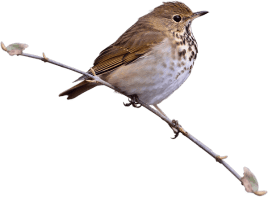Partners protect 280+ acres in priority watersheds
MONTPELIER, VT – Nearly eight miles of river and stream frontage have been protected to strengthen flood resilience and clean water, the Vermont Land Trust (VLT) announced today. VLT worked closely with the Vermont Department of Environmental Conservation (DEC), seven farms and several partners to implement long-term measures that will restore floodplains and improve water quality in the Lake Champlain and Connecticut River watersheds.
“Our rural state needs climate and water quality solutions that are a win-win for the environment and for farming,” said Tyler Miller, VLT’s vice president for stewardship. “Vermont farmers are stepping up to the challenge and adapting farming practices in ways that will bring ecological benefits to all.”
The partners established river corridors along waterways, where rivers will be able to follow their natural flow, and will maintain 50-foot vegetated buffers along the banks. Plantings of native trees and shrubs were completed on several farms, with additional plantings planned for 2022.
“These conservation efforts will stabilize stream banks, improve water quality and wildlife habitat, and make nearby communities more resilient to flood damage,” added Miller.
“We have conserved river corridors and wetlands on 40 farms and protected 2,600 acres of land throughout Vermont thanks to our 15-year partnership with VLT,” said Vermont Department of Environmental Conservation Commissioner Peter Walke. “Through this partnership, we work together to conserve farmland across Vermont and create river corridor easements and buffers that protect Vermont’s water quality.”
In one project, farmers protected a 33-acre river corridor along Ayers Brook that drains into the White River and eventually the Connecticut River.
“Farming along Ayers Brook, I’ve had an up-close and personal view of how the river can move,” said Miles Hooper of Ayers Brook Goat Dairy in Randolph. “We’ve been losing land along the bank and there are areas that will be gone in a few years, so it was an obvious decision for us to pivot and adapt now. What we do on our farm impacts what happens downstream — letting nature take its course means that the next time there’s a large storm event like Irene, the river will be less forceful because it can meander.”
River corridors protected within priority watersheds
In addition to Ayers Brook, conservation efforts targeted the White, Winooski and Missisquoi rivers and other tributaries which drain into Lake Champlain, and a branch of the Dead Creek. Specific projects are below.
- Randolph: Miles Hooper and his wife Daryll Breau of Ayers Brook Goat Dairy protected a 33-acre river corridor along Ayers Brook that drains into the White River and eventually the Connecticut River.
- Lowell: Organic dairy farmers Jason and Ashley Randall protected a 37-acre river corridor with over a mile of frontage on the Missisquoi; they also worked with the Missisquoi River Basin Association to plant 621 native trees and shrubs to re-forest banks.
- Sheldon: Pierre and Barbara Parent conserved 111 acres of river corridor along the Missisquoi River, Goodsell Brook, and an unnamed tributary.
- Sheldon: Suzanne and Philip Parent protected a 37-acre river corridor along the Missisquoi while conserving their 279-acre farm, with funding from the Vermont Housing & Conservation Board and the USDA Natural Resources Conservation Service.
- Bridport: Dairy farmers Kurt Ingwersen and son Michael Ingwersen conserved 22 acres of wetlands that drain into the West Branch of Dead Creek and then Lake Champlain. Nearly 2,000 trees and shrubs were planted there, in partnership with the Vermont Department of Fish and Wildlife and with funding from the state Ecosystem Restoration Program. DEC supported gully restoration work by a Vermont Youth Conservation Corps crew, to slow runoff and reduce erosion as water is carried from farm fields to Dead Creek.
- Marshfield: Fairmont Farm protected 20 acres of river corridor along the Winooski River.
- Bethel: Jeff Townsend of Townsend & Daughters Farm partnered with VLT, the White River Partnership, and US Fish & Wildlife to plant 1,830 trees and shrubs in a river corridor along the White River that was conserved last year.
All these farms were conserved with support from the Vermont Housing & Conservation Board. “VHCB is proud to support this important work with $2.3 million in state and federal funds. Our easements include provisions to help ensure steady progress improving Vermont’s water quality—a fundamental goal of land conservation,” said Executive Director Gus Seelig.
Enhancing a floodplain along the Winooski River in Jericho
In addition, the United States Environmental Protection Agency (EPA) helped fund floodplain restoration in Jericho, including four stream confluences with the Winooski River. VLT worked with farmers Christa Alexander and Mark Fasching to restore 22 acres of floodplain forest along the Winooski River in Jericho, including confluences with Mill Brook and three other streams. The floodplain forest, strengthened by 1,600 trees planted by volunteers in 2021, will help slow flood waters, trap sediment and debris, and provide wildlife habitat. The project has been funded in part by the EPA under an assistance agreement (LC00A00695-0) to NEIWPCC in partnership with the Lake Champlain Basin Program.
A shift in Mill Brook’s path that began several years ago is eroding acres of farmland and threatening the stability of nearby Rt. 117. VLT is exploring innovative restoration designs with consulting engineers and hydrologists; the Vermont Agency of Transportation; Judy Dow, an indigenous scholar, educator, and mother; and farmers Alexander and Fasching.
To date, the Vermont Land Trust has protected 1,200 acres of river corridor, at least 3,000 miles of rivers and streams, and over 2,000 acres of sensitive wetlands.


